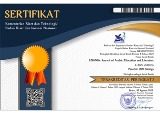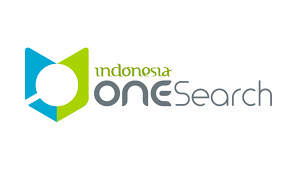The Readability Level of Arabic Textbook “Silsilah Fī Ta’līm al-Lughah al-‘Arabiyyah”
Abstract
Keywords
Full Text:
PDFReferences
Al-Tamimi, A.-K., Jaradat, M., Aljarrah, N., & Ghanim, S. (2014). AARI : Automatic Arabic Readability Index. The International Arab Journal of Information Technology, 11(4), 370–378.
Albadi, N. M., O’toole, J. M., & Harkins, J. (2017). Reading Difficulty and Language Features in an Arabic Physics Text. In Electronic Journal of Science Education (Vol. 21). Retrieved from http://ejse.southwestern.edu
Amanah, L. (2010). Gender dalam nomina bahasa arab. Sosiohumaniora, 12(2), 191–202. https://doi.org/10.31219/osf.io/ctnvu
Andriana, W. (2012). Analisis Keterbacaan Teks Buku Pelajaran: Studi Kasus untuk Teks Bahasa Indonesia, IPA dan IPS. Universitas Indonesia.
Cunningham, J. W., & Tierney, R. J. (1979). Evaluating Cloze as a Measure of Learning from Reading. Journal of Reading Behavior, 9(3), 287–292.
Dajani, B. A. S., Mubaideen, S., & Omari, F. M. A. (2014). Difficulties of learning Arabic for non-native speakers. Procedia - Social and Behavioral Sciences, 114, 919–926. https://doi.org/10.1016/j.sbspro.2013.12.808
Daud, N. M., Hassan, H., & Aziz, N. A. (2013). A Corpus-Based Readability Formula for Estimate of Arabic Texts Reading Difficulty Kulliyyah of Languages and Management Kulliyyah of Islamic Revealed Knowledge and Human Sciences Kulliyyah of Information and Communication Technology ,. World Applied Sciences Journal 21, 21, 168–173. https://doi.org/10.5829/idosi.wasj.2013.21.sltl.2151
Erlina, E. (2018). Pengembangan Bahan Ajar Qira’Ah Terpadu Bagi Mahasiswa Program Studi Pendidikan Bahasa Arab. Jurnal Al Bayan: Jurnal Jurusan Pendidikan Bahasa Arab, 9(2). https://doi.org/10.24042/albayan.v9i2.2242
Ghani, K. bin A. (2010). Kebolehbacaan buku teks bahasa Arab tinggi Tingkatan Empat Sekolah Menengah Kebangsaan Agama. Retrieved from http://malrep.uum.edu.my/rep/Record/my.um.stud.1692
Halim, Z. A., Alias, M. H. Y., Othman, M. A., Suhane, S. H. M., & Salleh, A. W. (2017). The Readability of Arabic Texts in Malaysia: A Need for a Suitable Measurement Instrument. International Journal of Academic Research in Business and Social Sciences, 7(6). https://doi.org/10.6007/IJARBSS/v7-i6/3199
Hassan, B. (2002). Language testing : the construction and validation. Kuala Lumpur: University of Malaya Press.
Herman, P., Perkins, K., Hansen, M., Gomez, L. M., & Gomez, K. (2010). The effectiveness of reading comprehension strategies in high school science classrooms. Learning in the Disciplines: ICLS 2010 Conference Proceedings - 9th International Conference of the Learning Sciences, 1(February 2017), 857–864.
KN, Y., Made, S., & Nengah, M. (2013). Kecermatan Forrmula Flesch, Fox Index, Grafik Fry, SMOG, dan BI sebagai Penentu Keefektifan Teks di Program Studi Pendidikan Bahasa dan Sastra Indonesia. E-Journal Program Pascasarjana Universitas Pendidikan Ganesha, 2(1).
Nassiri, N., Lakhouaja, A., & Cavalli-Sforza, V. (2018). Arabic readability assessment for foreign language learners. Lecture Notes in Computer Science (Including Subseries Lecture Notes in Artificial Intelligence and Lecture Notes in Bioinformatics), 10859 LNCS, 480–488. https://doi.org/10.1007/978-3-319-91947-8_49
O’Toole, J. M., & King, R. A. R. (2011). Reading by the numbers: Reconsidering numerical estimates of reading difficulty. International Journal of Learning, 17(10), 181–194. https://doi.org/10.18848/1447-9494/cgp/v17i10/47314
Salah, S. M. (2008). The relationship between vocabulary knowledge and reading comprehension of authentic Arabic texts. Retrieved from http://scholarsarchive.byu.edu/cgi/viewcontent.cgi?article=2826&context=etd
Tawfiq, S., & Al-khaza, J. (2021). The level of readability of the functional Arabic book for non-native speakers At Al al-Bayt University. Journal of Educational and Psychological Sciences, 75(5), 75–90.
Toiemah, R. A. (1978). The use of Cloze to measure the proficiency of students of Arabic as a second language in some universities in the United States (University of Minnesota: Dissertation Abstract International). Retrieved from https://www.worldcat.org/title/use-of-cloze-to-measure-the-proficiency-of-students-of-arabic-as-a-second-language-in-some-universities-in-the-united-states/oclc/23440395
Widyaningsih, N., & Zuchdi, D. (2015). Uji Keterbacaan Wacana Pada Buku Teks Bahasa Indonesia Kelas V Sd Negeri Di Kecamatan Wonogiri. LingTera, 2(2), 144. https://doi.org/10.21831/lt.v2i2.7373
Yunus, K. R. M. (1987). Formula kebolehbacaan: satu cara objektif untuk menentukan tahap kebolehbacaan bahan-bahan bacaan. Jurnal Dewan Bahasa, 4, 274–288.
DOI: https://doi.org/10.18326/lisania.v5i2.144-168
Refbacks
- There are currently no refbacks.
Copyright (c) 2021 Puti Zulharby
View My Stats








